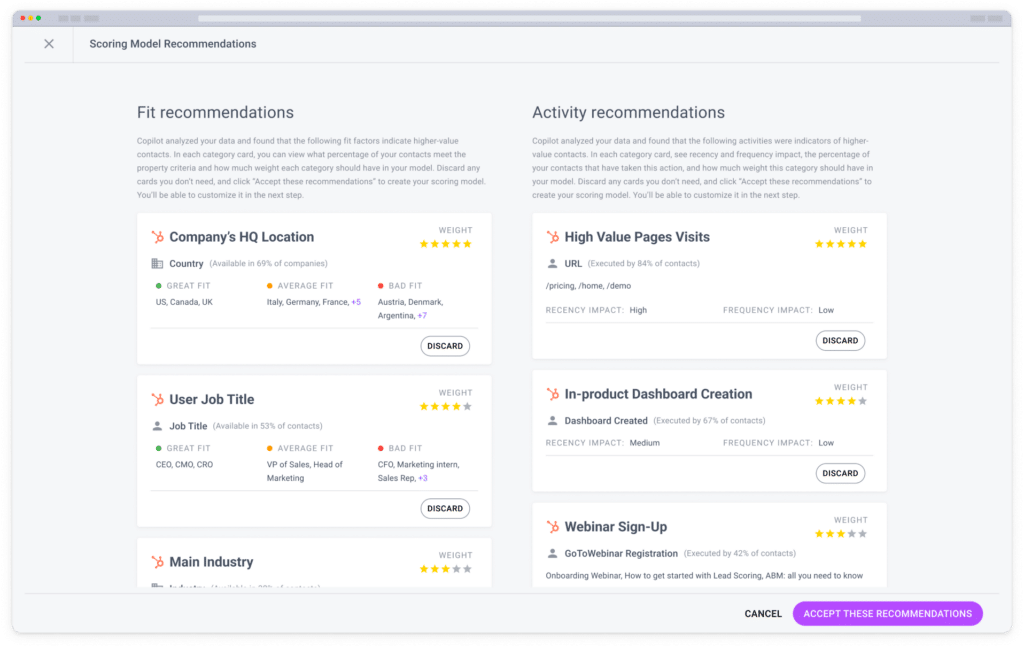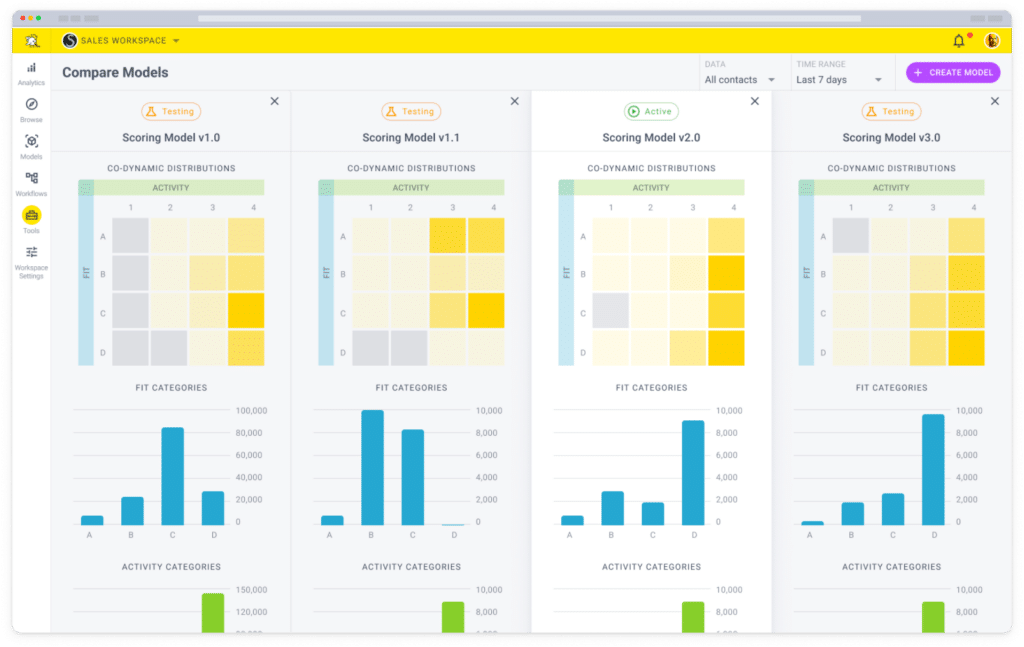You’re receiving a good number of qualified leads from your marketing team.
On the surface, this sounds great. More leads in the sales pipeline mean more potential customers, so you throw your energy into the sales process.
You have several productive conversations with your leads. They book appointments, and they express interest in signing a service agreement.
To finalize a plan and pricing proposal, they just need to give you information about their current state and requirements.
However, once you send them a proposal, your leads go cold and disappear.
Based on your conversations with your leads, you know they’re a great fit for your product. The timing is just right, and they can afford it.
So, you send a follow-up email, but they don’t respond, which reduces your sales win rate.
A poor sales win rate is often a lagging indicator because once your leads go cold and disappear, there’s little you can do to bring them back into your pipeline.
Improving your sales win rate requires optimizing your sales process to avoid losing leads at the last minute. In this post, we’ll share five strategies for improving your sales win rate.
Understanding Your Sales Win Rate
Your sales win rate is a metric that shows you the successful deals your sales team closes within a specific time period.
It’s expressed as a percentage, measuring your team’s ability to convert leads into customers.
Here’s how you can calculate your sales win rate:
Win Rate (%) = (Number of deals closed / Total number of sales opportunities pursued) x 100
If, in a given month, for instance, you have 35 closed deals out of 250 opportunities that your sales team pursued, your sales win rate will be 14%.
Why You Need To Improve Your Sales Win Rate
Your sales win rate provides you with data and valuable insights into sales and revenue performance.
The data and insights you collect from sales performance help you accurately forecast revenue from sales.
You can then rely on this forecast to set realistic targets for your sales team, setting them up for success right from the beginning.
Improving your sales win rate also means more conversions and revenue for your company.
This empowers the C-suite to allocate more resources to product development to drive innovation.
A higher win rate allows you to make a compelling business case when asking for more resources to expand your team and invest in the tools you need to accelerate sales performance.
5 Key Strategies to Improve Your Sales Win Rate
A low win rate helps you identify areas where you need to reduce friction to improve the buying experience and improve conversion rates.
Here are the strategies you need to use to improve your sales win rate.
Strategy 1: Understand Your Customer’s Needs
Your customer’s needs, goals, and pain points are constantly evolving due to market trends, economic conditions, and competitive landscape, among other factors.
To understand your evolving customer needs, you need to update your ideal customer profile frequently to make sure that your product aligns with their requirements by:
- Collecting customer feedback to learn about their evolving needs and preferences. Training platforms can be particularly useful for creating customized programs (i.e., Academy of Mine offers tools to design and deliver personalized content, helping your sales reps master value-based communication and improve performance.)
- Data analysis to identify behaviors, trends, and patterns that point you to emerging needs and opportunities.
Understanding your customer needs also allows you to streamline your lead qualification process by working with the marketing team to:
- Define the actions leads need to take to demonstrate that they’re ready for your sales team.
- Define the qualities of leads who are a great fit for your product.
This analysis helps you reduce time spent pursuing low-quality leads and efficiently use the available resources to improve conversions.
Strategy 2: Enhance Your Value Proposition
Throughout your entire sales process, your leads are constantly wondering—“Why you?”
How’s your product better than any other alternatives they’re considering, and why should they choose you?
Since we can’t rule out the possibility that they’re talking to other vendors in the same category with similar features and functionalities, it’s harder for leads to decide what product to pick.
So, to answer the question, “Why you?” enhance your value proportion by auditing your competition to identify opportunities to differentiate yourself.
Start by listing down your top 3–5 competitors and look at key pages on their websites, such as:
- Homepage: Look at the value proposition on the homepage to identify the pain points that the product alleviates. Does your product alleviate similar pain points? Are there important pain points they left out that matter to your leads and customers?
- Landing pages: Look at the ideas and arguments they use to influence leads. What ideas and arguments can you use to address leads’ deeper motivations and values and influence them to choose your product?
- Case studies: Look at the customers your competitors have worked with and the results the product has delivered to customers. Has your product worked with similar customers and delivered better results?
- Features page: Look at the features they highlighted. What features do they lack? If you share similar features, how are your product features better?
By the time you’re done with this exercise, you’ll have a value proposition that caters to diverse needs with a targeted mix. You’ll also analyze customer preferences and tailor your offerings accordingly. This will not only help you create a robust business proposal but also provide you an upper hand in comparison to your competitors.
Beaches of Normandy exemplifies this by providing different tours for touring Normandy, catering to budgets, interests, and desired experiences (e.g., basic historical overview, luxury guided tours).
This diversified product mix attracts a broader audience and increases your chances of winning over customers with the perfect tour option.
Strategy 3: Improve Your Sales Process
Marketing mix modeling helps you measure the impact of different marketing strategies on sales.
By incorporating marketing mix modeling into your sales strategy, you comprehensively understand the various elements impacting customer behavior and purchasing decisions.
You can then align your marketing operations activities to narrow down on effective channels, tactics, and campaigns that help you improve your sales win rate.
If you work in the hotel industry, for example, marketing mix modeling can show that a particular advertising campaign results in higher overall sales once a guest visits your site.
To improve your win rate, you’ll need to ensure that your hotel’s channel manager correctly displays its information, availability, inventory, and rates across all the different listings.
Whether a guest makes a reservation directly from your website or uses a booking site, the information must be consistent across different platforms so that the guest can feel confident in making the reservation.
Strategy 4: Provide Ongoing Training for Your Sales Team
To deliver a differentiated buying experience, you need to equip your sales reps with the skills, such as value-based communication, to help solve the problems buyers have as opposed to sales pitches.
Value-based communication gets the attention of your leads and prospects, as it helps them narrow down your product features to specific outcomes.
Training also helps your team members unlearn bad sales techniques they’ve picked up from other sales leaders that affect their sales performance.
A good example of a bad selling technique is going into the sales conversation with assumptions about the lead. They don’t listen to the prospect, and they fail to make a compelling case for your product through value propositions and addressing objections properly.
To effectively train your sales team, tailor your training based on their needs and preferences. According to the State of Sales report by Salesforce, here are the preferred training methods based on generation:
Strategy 5: Use Lead Scoring Tools like Breadcrumbs
Lead scoring tools allow your sales team to focus on high-qualified leads that are more likely to convert, so you can focus your sales efforts on these leads to increase your win rate.
So, when should you consider using a lead scoring tool?
- When you’re generating a high number of leads and looking at your CRM tool like HubSpot, you don’t know which leads are likely to convert, so you can pursue them.
- When you’re tired of relying on guesswork to build an ideal customer profile and want data-driven insights to help you improve your prospecting by targeting relevant prospects.
- When you want to establish the patterns between how leads behave and their likelihood to convert, you can build better lead scoring models that improve sales and marketing alignment.
Deep Dive: Using Breadcrumbs for Lead Scoring
Breadcrumbs is a lead scoring tool that helps you streamline the process of building, implementing, and optimizing your lead scoring models.
With Breadcrumbs, you can improve lead quality and improve your sales win rate, optimizing upsells and cross-sells and retaining customers at risk of churn.
How to use Breadcrumbs for Lead Scoring
Breadcrumbs allows you to integrate your existing tech stack, such as your CRM tools.
It uses your sales, marketing, and product data from your tech stack to create data-backed customer profiles and enrich your lead scoring model.
Using the Reveal tool, Breadcrumbs goes a step further to help you build a data-driven ideal customer profile to help you identify leads with the highest intent to convert.
Breadcrumbs Copilot feature uses AI and machine learning models to create customized lead scoring model recommendations based on specific actions that leads take and assigns weights based on specific criteria:
Breadcrumbs also provides you with sales data based on your lead scoring criteria to identify patterns between high-quality leads and conversions.
This helps you identify the most effective lead scoring model and improve it based on new data you collect, business goals, and market trends.
Benefits of using Breadcrumbs for lead scoring and its impact on the sales win rate
Done right, using Breadcrumbs as a lead scoring tool can supercharge your sales win rate.
It’s how Thinkific doubled their MQL to OPP rate in just three months by running a Reveal analysis to derive insights from all the data they had in their CRM tool. They then implemented a lead scoring model that helped prioritize high-quality leads.
Lead scoring tools address two of the biggest challenges of the sales process: understanding what leads to prioritize and effective differentiation.
Without knowing what leads to focus on and how to differentiate the buying experience, you’re missing out on opportunities to convert more leads into customers and improve your sales performance.
Conclusion
Improving your sales win rate is a long-term approach to improving your sales performance that requires buy-in from marketing, customer service, and your sales team.
The key to success when improving your sales win rate lies in understanding your customer needs, improving your value propositions, training your sales team, improving your sales process, and using lead scoring tools like Breadcrumbs.
Each of these strategies allows you to deliver a differentiated buying experience, helping you improve your sales win rate and overall performance.
Book your free demo today to get started with lead scoring and improve your sales win rate.





